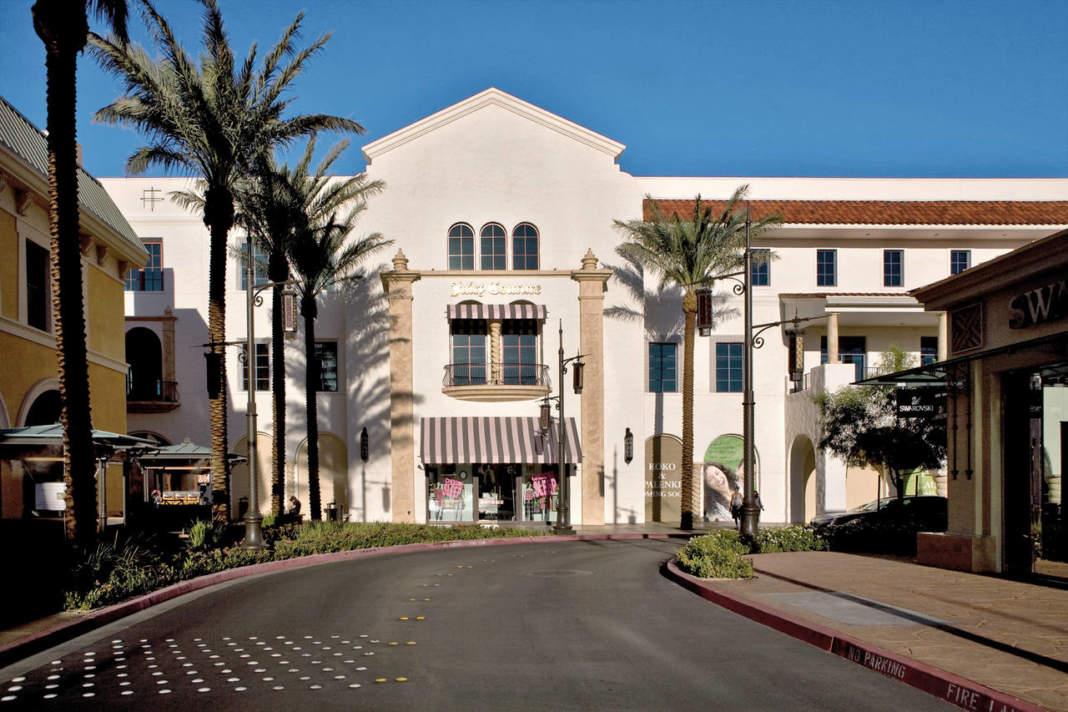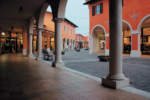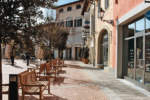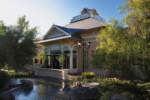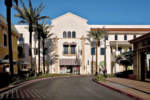There are places which are part of our everyday life, which dominate it in the forms and manners required by our society. There are places for consumption, transit, amusement which redesign the townscape of our city outskirts, the sense and the map of areas outside the city, the equilibriums characterizing dense and stratified urban realities. Those who design may not be fully conscious
of the importance of the role they play, as a category, as a global phenomenon. Those who build and invest in these place pursue, on the basis of a calculation of costs versus benefits, a simple, repeatable functional scheme based on the efficiency and standardization of performances and solutions. On the contrary, criticism of large supermarkets, outlets, shopping malls, strip malls, fuel stations, roadside cafes, railway stations and airports have for years focused – in an attempt to understand not just the social phenomenon and thus the consequences to the urban and territorial development, but also the architectural dimension – on the linguistic codes of communication, the styles adopted and the repercussions on the life of the persons who visit and use them.
Those who study contemporary phenomena have, in fact, understood that these places cannot be classified within traditional building types, either in terms of functional definition, or of their way
to condition social behaviours. In 1986 Marc Augé coined the term “non-places” by which he meant all those places which are produced by super-modernity, which cannot be defined on the basis of their identity, relations and historical aspects, characteristics which on the contrary determine the very concept of “place”.
Even if Augé’s theories are referred to a social and economic situation that differs from the current, they remain exemplary from an anthropological viewpoint, because they have succeeded in expounding, with great clarity and equally great concern, the danger of alienation and loss of personal values to which the individual is exposed. Moreover, his studies have highlighted the difficulty of managing functional spaces which do not create an organic social event, but rather a condition of “solitary contractuality” which is defined not so much by the communicative impact of the architecture as by the “words” which slavishly describe environments, suggesting behaviours and goals. Man’s role is reduced to that of a mere “user”, without any cultural and psychological expectation, something which results in a loss of identity. A more recent neologism, “super-place”2 reinterprets the meaning of “non-places” within the context of a by now global society, based on new lifestyles and on completely different expectations of social relations, in the final analysis revising the judgment of value and relation with the territory. The “superplace” interprets the need to have immediate and complex, diversified and simultaneous responses (solutions from public and collective places, both in the territory and in the historical space of the city; from an anthropological point of view it therefore represents the meeting of a need for a social space in which to consume the rites of everyday life. But these places, differentiated and contradictory, fail to put into words a symbolic aspect that may represent a model and image of the identity of the new social networks. The transition between the “non-places” analyzed by Augé and the present-day “super-places” is characterized by an inability to create new languages. This brings us back to a strictly disciplinary condition. Architecture communicates and expresses its significance through its morphology and the definition of its single components, to form a complex and coherent system of signs which may, in every aspect, be likened to a “language”, a significant form of the contents.
When these contents are not clearly expressed, when they are not univocal, and are not completely shared, then the language, rather than clarifying the meaning, attempts to interpret a suggestion capable of evoking other contents that are easier to convey and perhaps less banal than the real ones. We are therefore witnessing a proliferation of fake Medieval villages, agglomerates that evoke the tradition or the high-flown tones of history. Scenic effects prevail on substance, and rather than giving a concrete form to a new function, the architect creates a stage on which to live a dreamed reality which may serve as a noble background to the more pragmatic and material action of “consumption”, be it material or behavioural.The renunciation – cultural, social, architectural – to define a contemporary form, in order to seek refuge in a design of ideal and idealized worlds and lifestyles, is the underlying cause of “hyper-places”3. The last frontier area in which to meet, get to know one another, shop, find information and enjoy exciting adventures. However, it is not a matter of real places, but of virtual dimensions, in which it is nevertheless really possible to carry out these operations. Cyberspaces used by internet navigators, some of which are informal – a chat, a social network – and some of which are planned, also in their formal expression, as Simcity and online role plays. The reality of the “super-places” is, in the final analysis, more and more similar to the immaterial one of “hyper-places”, since one prefers to visit a clearly “artificial” place, far from the urban spaces, as long as it meets certain prerequisites: it must be quick to reach and have plenty of parking space, it must be efficient and thus capable of satisfying every need at any hour, its services must be reassuring and it must be able to change with the fashions. Just the things that make you prefer, with a few clicks, a certain website. Today there is therefore
a clear correspondence between virtual and real places. Atopic places characterized by the solitude announced by Augé, by disorientation, by uprooting. Places which represent, and produce, further levels of relations that are guided, controlled, filtered and that, in the final analysis, morally absolve from the isolation in which one risks to remain, by producing – like placebos – readymade relational instincts.
area 105
| artificial landscape


